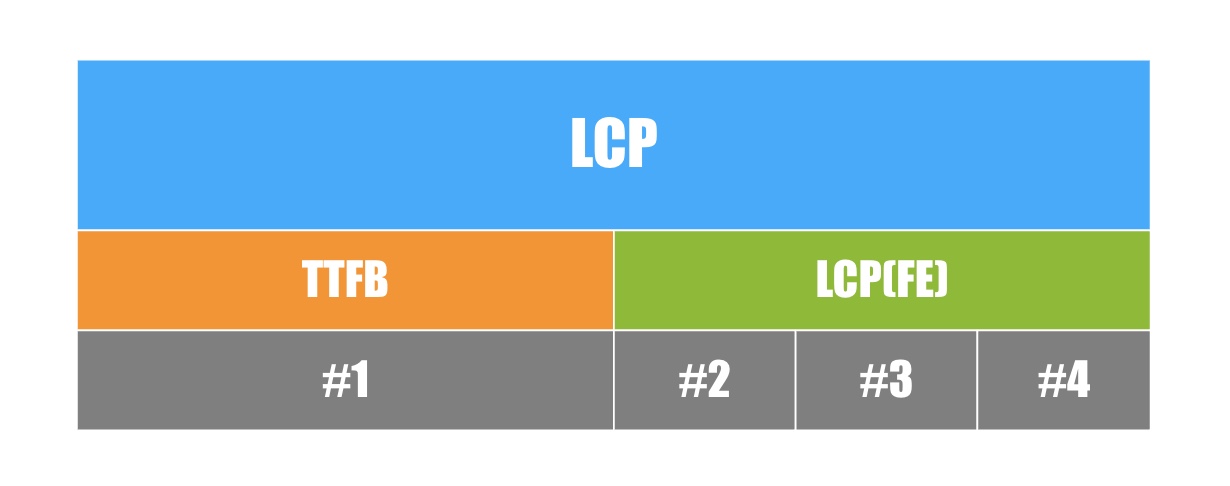
Tim Vereecke (@TimVereecke) loves speeding up websites and likes to understand the technical and business aspects of WebPerf since 15+ years. He is a web performance architect at Akamai and also runs scalemates.com: the largest (and fastest) scale modeling website on the planet.
Largest Contentful Paint (LCP) is one of my favorite KPI’s to focus on when improving user experience.
For technical teams I advise to additionally track LCP(FE), or the Front End Component of LCP.
A very simple formula:
LCP = TTFB + LCP(FE)

This suggestion is applicable for both RUM (Real User Monitoring) as well as Synthetic monitoring.
Background
Back-end teams already have a specific KPI (=TTFB) covering exactly what they are responsible for.
For Front-End teams their key KPI is LCP. However this contains a big portion (=TTFB) which is out of their control, which fluctuates and adds noise.
Therefore I suggest we focus on LCP(FE) instead. It is a front-end focussed KPI tracking exactly the part they are responsible for.
Doing so results in:
- Better detect pages with a slow front-end component
- Better visibility into smaller degradations/improvements
- More stable KPI
- Less noisy KPI
- Overlapping releases (front/back) no longer pollute KPI’s
This screenshot shows mPulse from scalemates.com. You can see how much variation there is between both components:

- The first row shows the slowest LCP (1.83s). While this page group has the fastest TTFB it has actually a very slow LCP(FE).
- The Homepage on the other hand has a TTFB issue and less an LCP(FE) issue.
Complementary to 4 LCP Components
If you have not yet read Phil Walton article on Optimizing LCP I recommend you doing so.
He splits optimizing LCP into 4 distinct components:
- #1 Deliver HTML
- #2 Resource Load Delay
- #3 Resource Load Time
- #4 Element Render Delay

I fully endorse the above method but I do think Front-End Teams need a single combined KPI to focus on.
LCP(FE) is a single KPI which can further be split into Resource Load delay, Resource Load Time and Element Render Delay
LCP(FE) = #2 + #3 + #4
Summary
Make your Front End teams happy with a key KPI they fully control, without the extra noise and fluctuations.
Yet it still fits in the bigger goal of making LCP faster.
